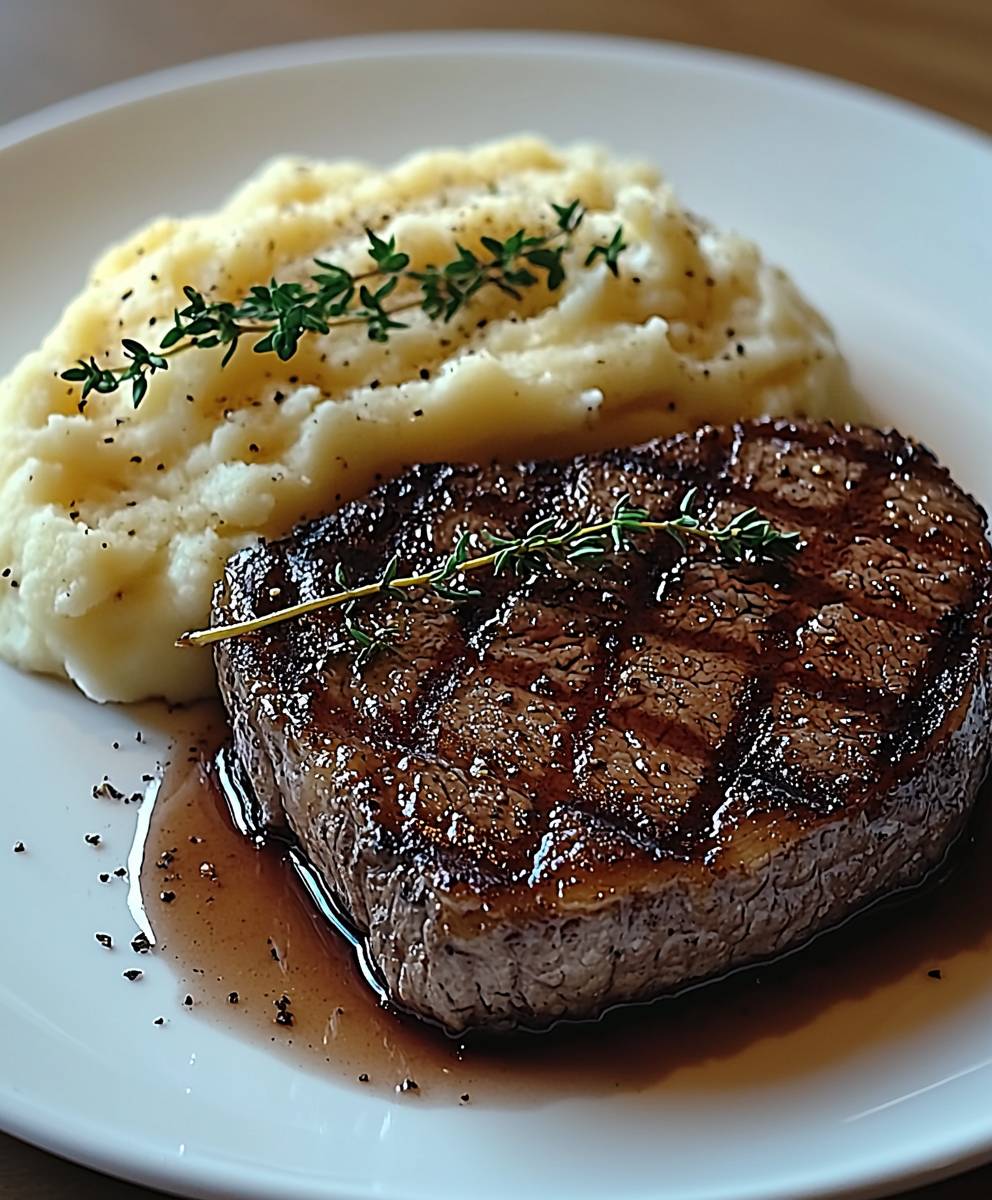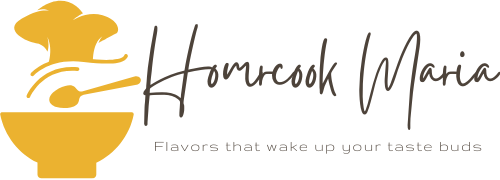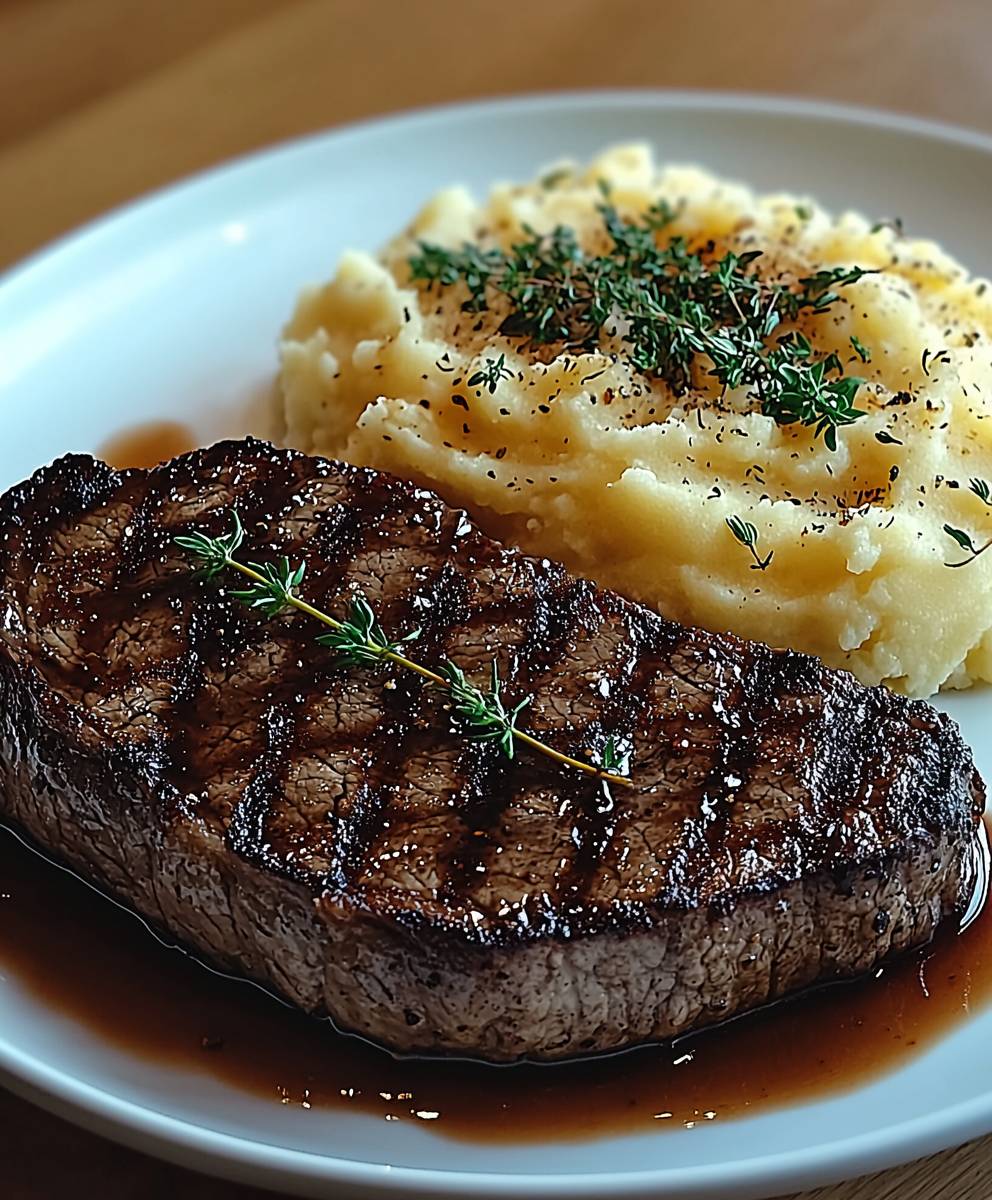Steak and mashed potatoes: is there a more comforting and satisfying meal? I think not! Imagine sinking your fork into a perfectly seared, juicy steak, followed by a mouthful of creamy, dreamy mashed potatoes. It’s a classic combination that has graced dinner tables for generations, and for good reason.
While the exact origins of pairing steak with mashed potatoes are a bit hazy, both components have rich histories. Steak, as a prized cut of meat, has been enjoyed since ancient times, often reserved for special occasions and celebrations. Mashed potatoes, in their humble simplicity, evolved from the introduction of potatoes to Europe in the 16th century. Over time, these two culinary powerhouses found their way onto the same plate, creating a symphony of flavors and textures that’s simply irresistible.
What makes steak and mashed potatoes so universally loved? It’s the perfect balance of richness and comfort. The savory, umami-packed steak provides a hearty protein source, while the smooth, buttery mashed potatoes offer a comforting and familiar base. The contrast in textures the slightly crisp exterior of the steak against the velvety potatoes is a delight to the senses. Plus, it’s a relatively straightforward meal to prepare, making it a weeknight winner or a weekend indulgence. So, are you ready to learn how to make the perfect steak and mashed potatoes? Let’s get started!
Ingredients:
- For the Steak:
- 2 (8-10 ounce) ribeye steaks, about 1-inch thick
- 2 tablespoons olive oil
- 2 tablespoons butter
- 2 cloves garlic, minced
- 1 sprig fresh rosemary
- 1 sprig fresh thyme
- Salt and freshly ground black pepper, to taste
- For the Mashed Potatoes:
- 2 pounds Yukon Gold potatoes, peeled and quartered
- 1 cup heavy cream
- 1/2 cup butter, softened
- 1/4 cup milk
- Salt and freshly ground white pepper, to taste
- Optional: 2 tablespoons sour cream or cream cheese for extra richness
- Optional: 1/4 cup chopped chives or green onions for garnish
Preparing the Mashed Potatoes:
- Boil the Potatoes: Place the peeled and quartered potatoes in a large pot. Cover them with cold water, ensuring the water level is about an inch above the potatoes. Add a generous pinch of salt to the water. Bring the pot to a boil over high heat. Once boiling, reduce the heat to medium and let the potatoes simmer for about 15-20 minutes, or until they are fork-tender. You should be able to easily pierce them with a fork without much resistance. The cooking time will vary depending on the size of your potato pieces.
- Drain and Dry: Once the potatoes are cooked, carefully drain them in a colander. Return the drained potatoes to the empty pot. Place the pot back on the stovetop over low heat for about 1-2 minutes. This will help to evaporate any excess moisture from the potatoes, resulting in fluffier mashed potatoes. Keep a close eye on them to prevent burning.
- Mash the Potatoes: Remove the pot from the heat. Using a potato masher or a ricer, mash the potatoes until they are smooth. If you prefer a chunkier texture, don’t over-mash them. A ricer will give you the smoothest, most lump-free mashed potatoes.
- Heat the Dairy: In a separate small saucepan, combine the heavy cream, butter, and milk. Heat over low heat until the butter is melted and the mixture is warmed through. Do not boil the mixture. Warming the dairy before adding it to the potatoes helps to prevent them from becoming gluey.
- Combine and Season: Gradually pour the warm cream mixture into the mashed potatoes, mixing with a wooden spoon or a hand mixer on low speed until everything is well combined and the potatoes are creamy. Be careful not to overmix, as this can also lead to gluey potatoes. Season with salt and freshly ground white pepper to taste. White pepper is preferred for mashed potatoes as it doesn’t leave black specks, but black pepper works just fine if that’s what you have.
- Add Optional Ingredients: If desired, stir in the sour cream or cream cheese for extra richness and tang. Fold in the chopped chives or green onions for a fresh, herbaceous flavor.
- Keep Warm: Cover the mashed potatoes and keep them warm until ready to serve. You can keep them in a warm oven (around 200°F) or in a slow cooker on the warm setting. Add a splash of milk or cream if they start to dry out.
Preparing the Steak:
- Prepare the Steak: Take the ribeye steaks out of the refrigerator about 30 minutes before cooking. This allows them to come to room temperature, which helps them cook more evenly. Pat the steaks dry with paper towels. This is crucial for getting a good sear. Season both sides of the steaks generously with salt and freshly ground black pepper. Don’t be shy with the seasoning!
- Heat the Pan: Place a heavy-bottomed skillet, preferably cast iron, over high heat. Add the olive oil to the pan and let it heat up until it is shimmering and almost smoking. The pan needs to be very hot to create a good sear.
- Sear the Steak: Carefully place the steaks in the hot pan, making sure not to overcrowd it. If your pan is too small, cook the steaks in batches. Sear the steaks for about 3-4 minutes per side, without moving them, until a deep brown crust forms. This is where the flavor comes from!
- Add Butter, Garlic, and Herbs: Reduce the heat to medium. Add the butter, minced garlic, rosemary sprig, and thyme sprig to the pan. As the butter melts, tilt the pan and use a spoon to baste the steaks with the melted butter, garlic, and herb mixture. This will infuse the steaks with flavor and help them cook evenly. Continue basting for another 2-3 minutes per side, or until the steaks reach your desired level of doneness.
- Check for Doneness: Use a meat thermometer to check the internal temperature of the steaks. For medium-rare, aim for 130-135°F; for medium, aim for 135-145°F; for medium-well, aim for 145-155°F; and for well-done, aim for 155°F and above. Remember that the steak will continue to cook slightly after you remove it from the pan.
- Rest the Steak: Remove the steaks from the pan and place them on a cutting board. Tent them loosely with foil and let them rest for at least 5-10 minutes. This allows the juices to redistribute throughout the steak, resulting in a more tender and flavorful final product. Don’t skip this step!
- Slice and Serve: After resting, slice the steaks against the grain into thin slices. This will make them easier to chew.
Serving:
- Plate the Dish: Spoon a generous portion of the mashed potatoes onto each plate. Arrange the sliced steak over the mashed potatoes.
- Garnish (Optional): Drizzle the pan juices over the steak and mashed potatoes. Garnish with fresh parsley or a sprinkle of paprika, if desired.
- Serve Immediately: Serve the steak and mashed potatoes immediately while they are hot and delicious. Enjoy!

Conclusion:
So there you have it! This isn’t just another steak and mashed potatoes recipe; it’s a blueprint for creating a truly memorable meal. From the perfectly seared steak, bursting with savory juices, to the creamy, dreamy mashed potatoes, every element is designed to deliver maximum flavor and satisfaction. I truly believe this is a must-try recipe for anyone looking to elevate their weeknight dinner or impress guests at a special occasion.
Why is it a must-try? Because it’s more than just food; it’s an experience. It’s the sizzle of the steak hitting the hot pan, the aroma of garlic and herbs filling your kitchen, and the pure joy of that first bite. It’s about taking simple ingredients and transforming them into something extraordinary. And let’s be honest, who doesn’t love a perfectly cooked steak and a mountain of fluffy mashed potatoes? This recipe takes those classic comfort foods and elevates them to restaurant-quality, all from the comfort of your own home.
But the best part? It’s incredibly versatile! Feel free to experiment with different cuts of steak. A ribeye will give you incredible marbling and flavor, while a New York strip offers a leaner, more robust bite. For the mashed potatoes, consider adding roasted garlic for an extra layer of depth, or stirring in some fresh herbs like chives or parsley for a pop of freshness. You could even swap out the regular potatoes for sweet potatoes for a sweeter, more vibrant side dish.
Serving Suggestions and Variations:
* Pair your steak with a vibrant green salad dressed with a tangy vinaigrette to cut through the richness.
* Add a side of roasted asparagus or green beans for a healthy and delicious complement.
* For a truly decadent experience, top your steak with a pat of compound butter flavored with herbs and garlic.
* If you’re feeling adventurous, try a red wine reduction sauce for an elegant and sophisticated touch.
* Don’t forget the gravy! A rich, savory gravy is the perfect finishing touch to your steak and mashed potatoes.
I’ve poured my heart and soul into perfecting this recipe, and I’m confident that you’ll love it as much as I do. But the real magic happens when you make it your own. So, don’t be afraid to experiment, tweak, and adjust the recipe to suit your own tastes and preferences. After all, cooking should be fun and creative!
I’m so excited for you to try this recipe and experience the joy of creating a truly delicious and satisfying meal. I’m especially proud of how this recipe highlights the importance of proper searing techniques for the steak and mashed potatoes, ensuring maximum flavor and tenderness.
Once you’ve given it a try, I’d absolutely love to hear about your experience! Share your photos, tips, and variations in the comments below. Let me know what you loved, what you changed, and what you would do differently next time. Your feedback is invaluable, and it helps me to continue creating recipes that you’ll love. So, go ahead, fire up the stove, and get cooking! I can’t wait to see what you create. Happy cooking!
Steak and Mashed Potatoes: The Ultimate Comfort Food Recipe
Juicy, pan-seared ribeye steak served atop creamy, homemade mashed potatoes. A classic comfort food meal, elevated with fresh herbs and simple techniques.
Ingredients
- 2 (8-10 ounce) ribeye steaks, about 1-inch thick
- 2 tablespoons olive oil
- 2 tablespoons butter
- 2 cloves garlic, minced
- 1 sprig fresh rosemary
- 1 sprig fresh thyme
- Salt and freshly ground black pepper, to taste
- 2 pounds Yukon Gold potatoes, peeled and quartered
- 1 cup heavy cream
- 1/2 cup butter, softened
- 1/4 cup milk
- Salt and freshly ground white pepper, to taste
- Optional: 2 tablespoons sour cream or cream cheese for extra richness
- Optional: 1/4 cup chopped chives or green onions for garnish
Instructions
- Place the peeled and quartered potatoes in a large pot. Cover them with cold water, ensuring the water level is about an inch above the potatoes. Add a generous pinch of salt to the water. Bring the pot to a boil over high heat. Once boiling, reduce the heat to medium and let the potatoes simmer for about 15-20 minutes, or until they are fork-tender. You should be able to easily pierce them with a fork without much resistance. The cooking time will vary depending on the size of your potato pieces.
- Once the potatoes are cooked, carefully drain them in a colander. Return the drained potatoes to the empty pot. Place the pot back on the stovetop over low heat for about 1-2 minutes. This will help to evaporate any excess moisture from the potatoes, resulting in fluffier mashed potatoes. Keep a close eye on them to prevent burning.
- Remove the pot from the heat. Using a potato masher or a ricer, mash the potatoes until they are smooth. If you prefer a chunkier texture, don’t over-mash them. A ricer will give you the smoothest, most lump-free mashed potatoes.
- In a separate small saucepan, combine the heavy cream, butter, and milk. Heat over low heat until the butter is melted and the mixture is warmed through. Do not boil the mixture. Warming the dairy before adding it to the potatoes helps to prevent them from becoming gluey.
- Gradually pour the warm cream mixture into the mashed potatoes, mixing with a wooden spoon or a hand mixer on low speed until everything is well combined and the potatoes are creamy. Be careful not to overmix, as this can also lead to gluey potatoes. Season with salt and freshly ground white pepper to taste. White pepper is preferred for mashed potatoes as it doesn’t leave black specks, but black pepper works just fine if that’s what you have.
- If desired, stir in the sour cream or cream cheese for extra richness and tang. Fold in the chopped chives or green onions for a fresh, herbaceous flavor.
- Cover the mashed potatoes and keep them warm until ready to serve. You can keep them in a warm oven (around 200°F) or in a slow cooker on the warm setting. Add a splash of milk or cream if they start to dry out.
- Take the ribeye steaks out of the refrigerator about 30 minutes before cooking. This allows them to come to room temperature, which helps them cook more evenly. Pat the steaks dry with paper towels. This is crucial for getting a good sear. Season both sides of the steaks generously with salt and freshly ground black pepper. Don’t be shy with the seasoning!
- Place a heavy-bottomed skillet, preferably cast iron, over high heat. Add the olive oil to the pan and let it heat up until it is shimmering and almost smoking. The pan needs to be very hot to create a good sear.
- Carefully place the steaks in the hot pan, making sure not to overcrowd it. If your pan is too small, cook the steaks in batches. Sear the steaks for about 3-4 minutes per side, without moving them, until a deep brown crust forms. This is where the flavor comes from!
- Reduce the heat to medium. Add the butter, minced garlic, rosemary sprig, and thyme sprig to the pan. As the butter melts, tilt the pan and use a spoon to baste the steaks with the melted butter, garlic, and herb mixture. This will infuse the steaks with flavor and help them cook evenly. Continue basting for another 2-3 minutes per side, or until the steaks reach your desired level of doneness.
- Use a meat thermometer to check the internal temperature of the steaks. For medium-rare, aim for 130-135°F; for medium, aim for 135-145°F; for medium-well, aim for 145-155°F; and for well-done, aim for 155°F and above. Remember that the steak will continue to cook slightly after you remove it from the pan.
- Remove the steaks from the pan and place them on a cutting board. Tent them loosely with foil and let them rest for at least 5-10 minutes. This allows the juices to redistribute throughout the steak, resulting in a more tender and flavorful final product. Don’t skip this step!
- After resting, slice the steaks against the grain into thin slices. This will make them easier to chew.
- Spoon a generous portion of the mashed potatoes onto each plate. Arrange the sliced steak over the mashed potatoes.
- Drizzle the pan juices over the steak and mashed potatoes. Garnish with fresh parsley or a sprinkle of paprika, if desired.
- Serve the steak and mashed potatoes immediately while they are hot and delicious. Enjoy!
Notes
- For the best sear on your steak, ensure your pan is screaming hot before adding the steak.
- Don’t overcrowd the pan when searing the steak; cook in batches if necessary.
- Resting the steak is crucial for a tender and juicy result.
- Use a meat thermometer to ensure your steak is cooked to your desired doneness.
- Warming the dairy for the mashed potatoes prevents them from becoming gluey.
- Don’t overmix the mashed potatoes, as this can also lead to a gluey texture.

